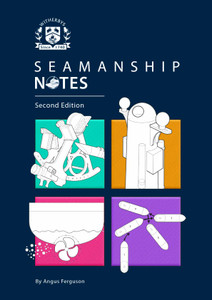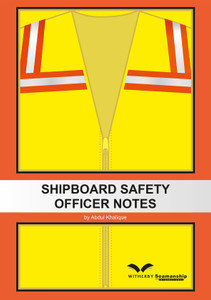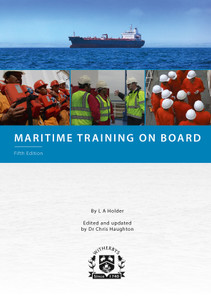
This is a practical guide to planning and conducting onboard drills, including drills relating to fire, MOB, collision, groundings, piracy attack, oil spill, hull damage, enclosed space rescue, blackout, lifeboats and emergency towing.
This book provides guidance on how to run meaningful onboard drills. It covers 18 different drills, outlining the objectives, format and debrief considerations. It also lists general drill guidelines and provides suggested frequency schedules for statutory and non-statutory drills.
Conducting drills at regular intervals is the best way to prepare your crew to deal with likely emergency situations that may arise on board. When planning a drill, it is better to have a meaningful one where the crew use the life-saving and fire-fighting systems on board, as this will build confidence that the systems will work effectively in an emergency.
It is the responsibility of each crew member to know where their emergency station is and what their responsibilities are for each drill or emergency. Nobody should be excused from drills unless their attention is required elsewhere for operational or safety reasons, and then only with permission from the Master.
It stands to reason that conducting frequent drills provides the crew with the opportunity to gain experience and confidence in the safety equipment in addition to developing as a team. Where possible, you should use any available time in port or while awaiting orders to conduct drills so that the ship’s business is not delayed.
Frequent crew changes can make it difficult to ensure that all the crew have taken part in drills. It is therefore important that drill scheduling is properly implemented and adhered to.
In order for drills to have the best benefit, it is important that these skills are exercised regularly. This is why there is a mandate for both statutory and non-statutory drills. Therefore, where possible, drills should be held each week to either meet or exceed the requirements of the Flag State and other guidelines.
Each drill should be planned to ensure that, on a rotating basis, all safety equipment is used and training is given in its use. They should never be regarded as an obligatory task that is merely carried out to meet regulatory requirements. Whether they are emergency drills required by SOLAS or additional drills designed to improve crew competence, they should be carried out with the same amount of diligence and seriousness. They should not be rushed; regular practice will improve the efficiency in performing the tasks. Remember, a drill can be paused, so that any difficult elements can be explained. The crew’s experience is important in determining how quickly a drill or certain elements of a drill can be carried out.
SOLAS requires drills to be conducted, where possible, as if it were an actual emergency. It is important that drills are carried out in a safe manner and, therefore, any elements that may involve unnecessary risk will require special attention or should be removed from the drill.
Shipboard Drills
1. The Muster List
2. Lifeboat Drills
3. Rescue Boat Drill
4. Fire Drill
5. Passenger Drills
6. Emergency Steering Drill
7. Enclosed Space Rescue: Training and Drills
8. Pirate Attack Drill
9. ISPS/Security Drill
10. Oil Spill Response Drill
11. Hull Damage/Flooding (Damage Control) Drill
12. Helicopter Drill
13. Grounding/Stranding Drill
14 Emergency Towing Drill
15. Man Overboard Drill
16. Blackout/Power Failure – Bridge Response
17. First Alert Drill
18. Collision Drill
19. Break Away from Berth Drill
Witherby Publishing Group
Witherbys titles are developed using scripts developed by technical experts that are peer reviewed within work groups. Typically, they seek to improve understanding of the regulations, recommendations and guidelines issued by Industry.
Witherbys staff have significant expertise in the fields of navigation and hazardous cargoes as well as in the presentation of complex subjects in a graphic and easy to understand manner.
- Number of Pages:
- 59
- ISBN:
- 9781856095549
- Published Date:
- June 2012
- Binding Format:
- Paperback
- Book Height:
- 230 mm
- Book Width:
- 150 mm
- Weight:
- 0.3 kg
- Author:
Witherbys
- Preview:
- Yes






